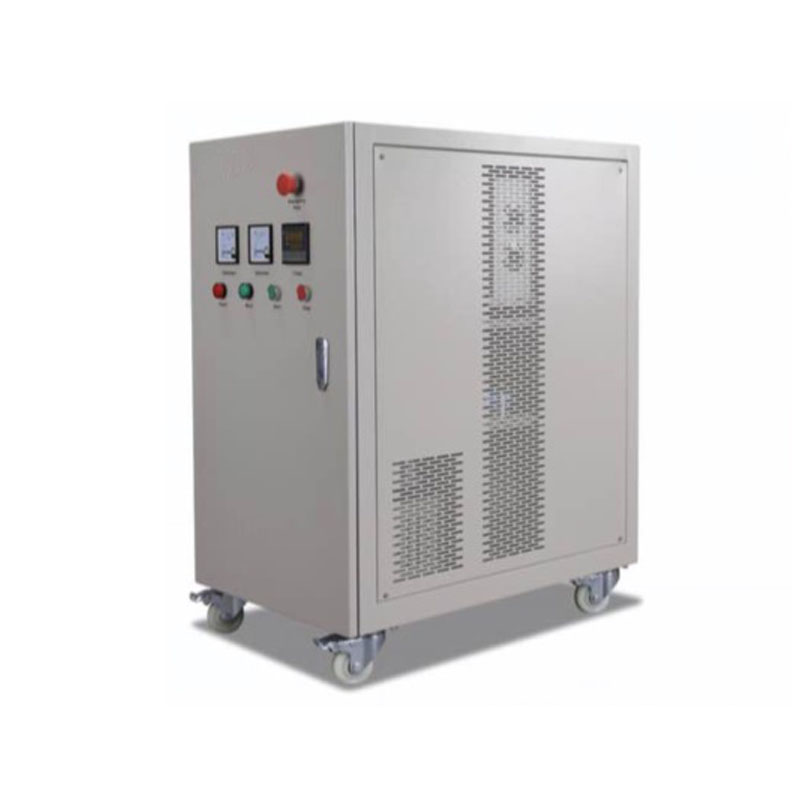

|
Item |
Unit |
OZ-YA10G |
OZ-YA15G |
OZ-YA20G |
OZ-YA30G |
OZ-YA40G |
|
Oxygen flow rate |
LPM |
3.5 |
5 |
8 |
10 |
10 |
|
Ozone concentration |
Mg/L |
49~88 |
||||
|
Ozone output |
G/Hr |
10 |
15 |
20 |
30 |
40 |
|
Power |
Kw |
≤0.81 |
≤0.924 |
≤1.00 |
≤1.23 |
≤1.5 |
|
Current |
A |
3.6 |
4.2 |
4.5~4.7 |
5.6~5.8 |
6.5~6.7 |
|
Net Weight |
KG |
86 |
89 |
92 |
97 |
105 |
|
Size |
mm |
500×720*980 |
||||
This oxygen source ozone generator, with stable ozone output and high ozone concentration, safe and powerful for food & drinking water treatment.
Ozone is a more powerful oxidizing agent than chlorine but unlike chlorine it does not lead to the formation of THMs (tri-halomethanes) or complex chlorinated compounds which are believed to cause cancer.
Ozone can treat a large spectrum of water issues including:
Bacteria, including iron bacteria
Heavy metals such as iron and manganese
Organic contaminants such as tannin and algae
Microbes such as Cryptosporidium, Giardia and Amoebae, etc, All known viruses
Biological Oxygen Demand (BOD) and Chemical Oxygen Demand (COD)
Ozone is a beverage bottlers' dream.
Ozone's powerful disinfection capability, high oxidation ability and short half-life makes it the ideal candidate to perform the following critical functions in a bottling plant:
Disinfect the bottled water from all bacteria & viruses including E.coli, cryptosporidium, and rotavirus
Treat the bottled water precipitating heavy metals such as iron and manganese, removing colour, tannin and hydrogen sulfide
Clean and disinfect the bottles including reusable bottles prior to bottling
Clean and disinfect bottling equipment
Clean and disinfect the bottle caps
Create a sterile environment in the air found between the water surface and the bottle cap
Why Use Ozone?
What oxidizer can kill bacteria, impart no adverse taste or odor, be tested and verified that it is present and have no residual when consumed? Chlorine and hydrogen peroxide cannot work without
filtration/destruction. Ultraviolet cannot. Ozone is the only choice left.
Ozone's powerful disinfection capability has made it very useful in many areas of food processing and packaging. As concerns about the health effects of chlorine treatment by-products rise, ozone is gaining an important role in many food applications.
Including:
1. Fruit and vegetable disinfection.
2. Poultry chiller water treatment
3. Spice and nut disinfection
4. Meat and seafood disinfection
5. Food storage to extend shelf-life and prevent pest infestation (grains, potatoes etc)
6. Ozonated ice for extending shelf-life of seafood, and produce
7. Wheat tempering with ozonated water to reduce microbial count in flour